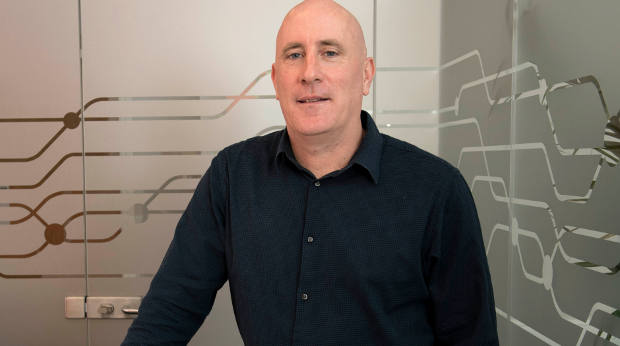
Transformation without transgression
Digital transformation can mean different things to different people. As our main feature this month highlights, some organisations embark on the journey of transformation, only to discover that the waypoints revealed are not quite what they thought.
This is not only a common experience, but one that is foretold by analysts and advisors, and not to be feared. Listen to the data, is one axiom that many consultants insist upon, and if the data suggests something other than what was expected, it can lead to additional soul searching for an organisation, over and above the need to transform.
However, at the core of digital transformation for most organisations is a common approach of hybrid systems, cloud integration and organisation-wide analytics to enable the journey. Decisions this month, asks how that can be achieved without increasing complexity or being led down blind alleys.
The nature of transformation for an organisation may depend on who leads it. Research by Constellation Research last year found that increasingly CIOs and CDOs are leading the charge, but that CEOs are well in there too. Which one leads appears to be determined mainly by organisation size.
Respondents to a survey by the researcher said a third (33%) their CIO leads their organisation’s digital transformation strategies, with the CEO leading in nearly a quarter (23%) per cent and the CDO leading in 20%.
In 2017, CEOs led the highest percentage of digital transformation efforts, at 29%; CIOs guided 19%; and CDOs headed just 8% of such efforts.
While more CIOs are taking the rein in digital transformation efforts, the report notes the rise in the prominence of the CDO in these initiatives, according to the authors of the report, R ‘Ray’ Wang, principal analyst and founder, and Courtney Sato, director of research development, at Constellation Research.
Smaller business leaders
Among small businesses, or those with revenue of less than $10 million, CDOs and CEOs lead an equal share of digital transformation efforts, at 33% each. The CIO leads none of digital transformation efforts among the SMBs surveyed. But it is a different matter for larger businesses, or those with $10 million to $500 million in revenue. There, CIOs lead 60% of digital transformation efforts; and CEOs, 17%. Among these organisations, too, CDOs guide 3% of such efforts.
For enterprises with over $1 billion in revenue, CDOs are the leaders of choice. Thirty-two per cent of these enterprises said the CDO leads their digital transformation efforts, with CIOs at 24% and CEOs at 12%.
The implication would have to be that where a CIO, and probably the CDO, are transformation leaders, integrations and implementations are less likely to add undue complexity to environments, as these officers were most likely to have had deep input into enterprise architectures. They would leverage that insight to ensure that any further systems or integrations work well with existing estates.
Despite these insights, there are still things to avoid and lessons to be learned from early adopters as the digital transformation journey has advanced for many.
“Lots of organisations look at technologies to solve specific problems or see technology as a way to transform a business,” said John McIntyre, head of Digital, Analytics and Cognitive Services, Sogeti Ireland. “But giving an iPad to all of your employees does not make you a digital business. Digital businesses are end to end.
McIntyre explains that for businesses to become truly digital, careful integration is necessary to ensure the promise of one technology is properly supported and upheld by the rest.
“Some people can find technology such as chatbots very useful for interacting with organisations. If the Chatbot is not connected to other internal systems, like CRM or ticketing for example, the process/technology fails quickly because the customer cannot do anything meaningful. So Digital Transformation and Customer Experience is not about a new Chatbot, Web site, Mobile App, etc, it is about an end to end process transformation. Don’t limit great technology by limiting the interactions which users can have.”
Gradual steps
This is where the spectre of complexity can appear, compounding issues, unless a gradual approach is taken.
“This can get very complex, very quickly,” warns McIntyre. “So organisations work on Proof of Concepts (or Minimum Viable Products) to identify what can be done quickly. This can be easy and quick to complete but can be too limited to be useable, so won’t go Live.
“We like to work on what we call a “MLPs” (Minimum Loveable Product). A MLP is something small enough that is achievable but which the business likes enough to release and IT can make live. It is the minimum amount of value that will be useful for customers, without developing a complex system.”
This approach is broadly supported by Frank O’Dea, chief innovation officer, EY, Ireland.
“The best piece of advice I could give to anyone embarking on a transformation journey is to think big but start small,” said O’Dea.
“Develop a digital transformation roadmap that details the various elements and stages of the project, with realistic timelines. Use prototypes and pilots and iterate. This will help de-risk both the technology and the associated business change. Using agile delivery will help break down the complexity of what can be an overwhelming programme into smaller, more manageable elements.”
Failure risk
Whether part of a digital transformation effort or not, some technologies are simply harder to implement, with a higher failure rate, than others. However, when relying on a particular technology, platform or stack as part of a transformation effort, this becomes more of a risk.
“A lot of organisations and clients which I visit,” said McIntyre, “talk about the technology they have bought. Some talk about how successful they have been, but most tell me about the failures of the technology. This is not any one particular technology. However, agencies such as Gartner and Forrester often produce stats on specific technologies which have high failure rates (CRM implementations used to have a higher than 50% chance of failure, for example).”

O’Dea also points to old issues with new technologies. “Robotic Process Automation (RPA) technology can introduce huge efficiencies by automating processes that would otherwise require manual effort,” said O’Dea. “The solutions out there are very good at replicating desktop activities such as copy/pasting, keying in data and moving information between applications. However, we often see problems in implementation with Java based applications, flash-based web sites, or where thin client technologies are used.”
“Implementation of the technology is the most important aspect,” states McIntyre. “What problems are you trying to solve? What are the use cases? Who will support the solution during the deployment and afterwards? Will the solution evolve afterwards or are we designing for the future?
Of course, a successful implementation is only in part having the technology deployed and available, the next step is adoption and use by the user base.
“Another aspect to consider is how other parts of your organisation will buy into the technology choice,” said McIntyre. “For example, when we implement new technology for our clients, we spend a lot of time with other part of the business.
“How will people access the technology? We need to talk to security. Is this technology or a competing already being considered by other parts of the business? We need to chat to the enterprise architects. What technology licenses are already available to the organisation? Talk to IT. If all parts of an organisation are not on board with the decision, there will be perceived problems with the technologies.”
Design thinking
Collaboration and close working is key, says McIntyre, and a good approach, he says, is Design Thinking.
“We find that Design Thinking methods can be one of the best ways to design a solution,” said McIntyre. “Design Thinking methods will help get IT and business together for a start. This method will also help to prototype ideas about the type of solution that is actually required.”
He advises to talk to all aspects of your business and consider how this will be supported by the business. The question of whether an implementation partner is need, or in-house developers, to customise or develop the technology is also worth exploring, he says.
O’Dea’s advice is to carefully manage expectations on the journey of transformation.

“You will never reach the finish line of your digital transformation journey,” O’Dea warns, “so manage your own expectations from the beginning. Technology and digital services available are simply moving too fast. Your digital transformation strategy might not deliver the latest AI, blockchain or IoT trends but don’t self-induce complexity by thinking you have to deliver these now.
“Instead use enterprise architecture techniques to make sure you have the building blocks in place, so your next digital transformation doesn’t have that complexity,” said O’Dea.
For Irish organisations, the size criteria from the Constellation Research survey do not necessarily apply. As such, a CIO or CDO, led transformation effort seems to make the most sense.
As these officers will likely have a greater understanding of how any digital tools selected by the business will likely impact in integration will existing systems. With the benefit of this knowledge, the CIO should be able to guide choices, manage expectations and ensure that desired outcomes are reached within reasonable timeframes to deliver value before markets or opportunities have moved on.
Transformation advice
In a Gartner paper on avoiding digital transformation pitfalls, the analyst gives some clear advice for organisations.
It emphasises having a clear vision and common understanding of digital business, which should produce a clear wording of the digital vision.
Within this vision, collaboration is vital with the use of consistent messaging.
The old chestnut of making sure that the transformation is business-driven, not technology-led, still needs airing.
And echoing the previous points, Gartner advises to design and pilot the new digital operating model, to provide a real world basis to try before roll-out.
With all this in mind, Irish organisations should be able to safely continue their transformation efforts, without the fear of creating a complexity nightmare, while bolstering figures from the earlier cited research that found more than two thirds (68%) reported a positive return on investment on their digital transformation strategies.
Industry comment
The real power of transformation
Digital transformation (DX) is the integration of digital technology into all areas of a business. It changes how you work and delivers additional value for your customers. Most companies have already started on their DX journey.
IDC’s 2019 predictions research found that “digital transformation investment spending will be $5.9 trillion (€5.4 trillion) over the years 2018 to 2021.”
Full digital transformation happens when you apply new technologies to processes or applications, perhaps starting with something as simple as enabling customers to complete forms online instead of using paper documents.

The real power comes when you have transformed all your key business applications such as email, ERP, CRM, Microsoft Office applications, data back-up, disaster recovery and public facing applications. Only when they are all transformed and working together will you get the full impact.
You will have given your customers what they have already expected; speed, efficiency and success and achieve customer loyalty and ultimately increase your revenue.
The first stepThe first step is to think differently. Digital transformation is a cultural change and so organisations will continually have to challenge how things are currently done to continue to improve.
That might mean turning your back on business processes that have been there since the beginning and turning towards new practices that are still being defined. You will need to merge technology with your corporate strategy to continue to evolve.
IDC says that by 2020, at least 55% of organisations will be digitally determined, transforming markets and re-imagining the future through new business models and digitally enabled products and services.
With DX you have speed and efficiency. Digital transformation is a powerful ongoing process.
John Casey is sales director with Trilogy Technologies
Freed from constraints
Complexity comes from many sources but key amongst these are:
• The automation of poorly designed processes;
• IT systems being out of alignment with business processes, and
• Siloed IT systems bridged by a myriad of interfaces, APIs and file handoffs.
Before any consideration of technology, it is critical to reimagine your business processes freed from the constraints of your existing IT systems. While recognising that legacy systems are sometimes highly invested in your business, they need not necessarily constrain your processes. TEKenable has worked to successfully implement significant business change with many companies that have legacy systems.

An Integrated suite of Platform products such as the Microsoft Power Platform, which comprises PowerBI, Flow (a systems integration platform) and Power Apps operating in concert with Office 365, Dynamics 365, SharePoint and the Azure Cloud can, when implemented by a skilled vendor, greatly reduce complexity. It does so through providing a combination of highly integrated systems spanning the functional needs of most organisations, through a Low Code approach that greatly reduces the extent to which bespoke software is required and through encouraging the clear separation of responsibility between systems avoiding functionality being replicated multiple times (e.g. how many of you have systems that each have identity and permissions managed within them individually rather than centrally?).
TEKenable recently implemented Microsoft Power Platform with Dynamics 365 and SharePoint for a financial services business. We migrated and removed SugarCRM, some bespoke software and a number of siloed third-party systems and integrated a legacy system. The project started however with reimagining the business processes. The result was a substantial improvement in efficiency, a higher level of automation of the business process, a very high degree of future flexibility from the Low Code delivery approach and an overall reduction in complexity, business and technical.
Peter Rose is chief technology officer for TEKenable
Driving iterative value
Digital Transformation – I think we first encountered this phrase (or very similar) in the 90’s when working for or with IBM. Then came the paperless office, the digital office, the digital workspace and many more terms to try an articulate what it is we are all striving for – technology to deliver the most facilitative, productive working environment aligned to our professional goals and the company goals. Yet even that statement is misleading – what happens if you engage in a digital project to optimise certain processes across your business. First step is documenting these processes (assuming they even exist) and then challenging why they exist, what role do they play and how we can optimise them. This often leads to a hotly debated workshop scenario with colleagues where, well managed, challenges can result in a far better flow – a more joined up series of processes reflective of how things should be done versus ‘that’s the way they were always done’! That in itself is a good outcome and yet no technology has been deployed – only common sense, agreed purpose and time.

So does Digital Transformation equal technology, and if so, how can we guard against a technology project for the sake of it? An even scarier prospect – how do we ensure we don’t go backwards when implementing technology (we called it ‘freeze’ in the ‘90s when it should have been ‘reverse’). Well yes, I think it does. If you want to ensure a digital transformation project remains current and sustains the returns you are seeking, then technology is the enabler of this – technology will automate the optimised state and ensure this wasn’t simply a once off project designed to correct a problem. It will, properly utilised, evolve your way of doing things and continuously deliver value as you push your business forward.
Technology, used well, can come at ‘digital’ from two angles – it can deliver key insights instantly to your business that may otherwise remain dormant across disparate systems. But it can also do simple things very well – it can automate manual tasks and instruct systems to talk to each other thus allowing transformation take place without the need to rip up everything and start again. But don’t, as many of us have at times, think the silver bullet lies in the technology itself – you must be clear on what you are transforming and what you expect this to transform to.
If you are clear on the goal of your digital transformation journey then technology will create a sustainable platform to ensure you drive iterative value on a regular basis – don’t bury your head in a long term project hoping the answer will emerge!
Paul Flavin is commercial director of Triangle
Want to embrace digital transformation? Start in the cloud
Digital transformation is a journey of strategic, planned organisational change and is about exploiting everything that technology has to offer. The biggest challenge facing our customers is that they don’t know where to begin. They want to digitally transform their business and they are committed to making it happen in principle, but they need to understand what digital transformation means for their business.
Some organisations see digital transformation purely in operational terms; as a way to use automation to improve internal processes or increase performance. Normally, businesses that had no digital strategy up to this point will take this approach.
However, I believe the biggest potential gains are in applying digital transformation to innovate: helping a company to create new services and solutions, generating revenue and profit for the business and increasing customer satisfaction. Digital transformation isn’t just a matter of adopting technology; it’s a mindset that leads to changing your business model and the strategy behind it.
Cloud technology is the backbone to both types. It enables businesses to move with speed and agility, to spin up resources quickly, and change them rapidly if needed, and do so at a lower cost than with traditional technology infrastructure. The cloud allows businesses to bring solutions to market much faster than they could before – and speed to market is where innovators are winning.

For example, we recently helped a company to develop a suite of reports that it wanted to present to its multinational customers. These customers wanted the data, but our client had no way of providing it except through spreadsheets. Now, by delivering these dynamic reports via the cloud in a way their customers can easily see and interact with, the company has a brand new service it didn’t offer before. It’s helping the company to retain and add value to existing customers and acquire new ones. Having the ability to present customers with real-time data is unique in that company’s market.
Other benefits from moving data to the cloud include streamlining operations and moving from on-site IT hardware to infrastructure as a service. This frees up internal resources to focus on business needs, turns IT into a service that you can switch on and off more easily, and gives organisations the agility to trial new services that can help it to improve efficiency. This could include enabling employees to access applications and data while working remotely, which has the potential for productivity gains.
There is another compelling reason to consider the cloud right now. Windows Server 2008 is currently one of the most widely adopted server operating systems but from 14 January 2020, it will reach end of life and Microsoft will no longer support it. So for a limited time, Arkphire is offering all organisations in Ireland and the UK a free migration to Microsoft Azure and Office365 between now and 14 January 2020.
This includes an assessment of current systems, a tailored migration plan that maps to the client’s business strategy, and no-cost engineering time to bring your systems and data to the cloud. To find out more, visit www.arkphirecloud.com.
Whether your focus is on internal process improvements, or innovation that opens new markets for your business, cloud is the critical building block in enabling the digital transformation in your business. And with Arkphire’s free migration offer, now is the right time to grasp the opportunity.
Oliver Surdival is head of cloud services with Arkphire
How to get to success faster with digital CX projects
Customer experience (CX) is one of the year’s biggest business trends, and it is driving growing numbers of companies to deploy web and mobile applications like chatbots and self-service portals aimed at delivering a better, more engaging customer journey.
Like many technology projects in years past, implementing these kinds of digital platforms can be a demanding and lengthy undertaking – with all of the risks that brings. There are plug and play software tools that deliver similar functionality, and they’re usually good enough for internal employee use. But for external systems that customers will interact with, large organisations usually prefer to deliver a slicker interface based on a more tailored customer journey, and that means building tailored solutions.

The challenge is that building a bespoke web or mobile application can be complex and costly. Fortunately, it has never been easier to spin up an environment in AWS or Azure, so the days of waiting three months for a server to arrive are gone. But the customer data often resides on the core legacy systems of a business, in its own data centre, so what you end up with is a hybrid system that integrates customer data with the application sitting on top of that.
In many cases, the bigger challenge with digital programmes is not the technology itself but the organisational processes and culture. There needs to be a customer journey mapping exercise at the start of the project, with the right people in the business involved. In my experience, the key to making these projects successful is to keep the team lean, and start by working on a proof of concept, building and iterating quickly using agile methods, to deliver a functioning prototype within two to three months.
At this stage of the project, it’s about getting a minimum viable product out quickly. Don’t over-engineer the solution; look to automate as much as possible around the design, build and deployment. This is where a DevOps approach brings real benefits. Once the design work happens up front, you develop automated test cases for user interface, testing the frontend functionality or the API.
DevOps automates checking of code from a source code repository to scan it for errors, and then the code is automatically deployed onto a development server. From there, it goes to testing for functionality and once it is passed this phase, it is deployed into the next stage environment. As part of the DevOps process, a dashboard report lets the team see if everything is working or highlights where fixes are needed.
Bringing a DevOps approach into a large organisation requires a change of mindset, since many of them are more familiar with manual scripting and testing, but it is highly transparent. Although there is upfront investment needed for the automation capability, this is soon repaid by the time you reach system tests, integrated tests and most importantly, showing the quality of the system to the business.
In fact, at Singlepoint we developed DAP× in response to seeing those issues in the market. DAP× is a cost-effective pre-built framework that supports agile processes for delivering solutions and services on both cloud and on-premise infrastructures. It enables companies to reduce architecture deployment costs by up to 50%, speeding up application delivery while improving quality and reducing risk.
In a time of greater user expectations, there’s a proven way to deliver high-quality customer-facing applications quickly and effectively: small teams, DevOps, launch and iterate quickly, to get to a better result faster.
Rob Curley is managing director of Singlepoint








Subscribers 0
Fans 0
Followers 0
Followers